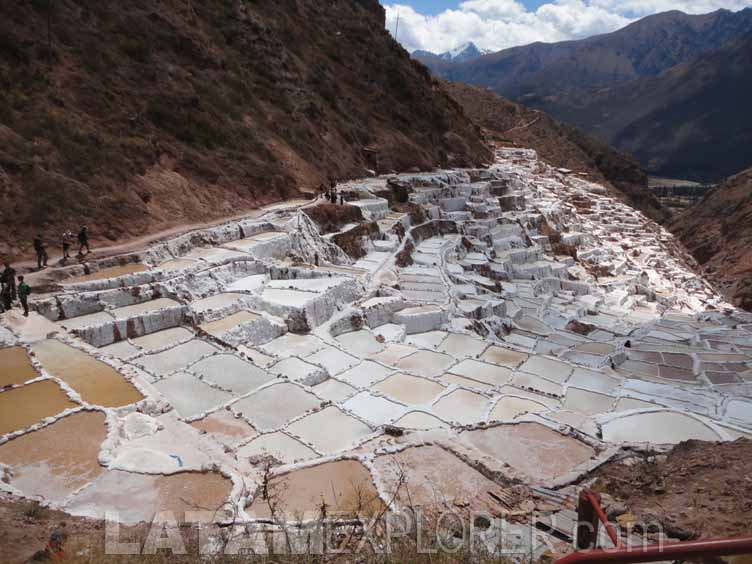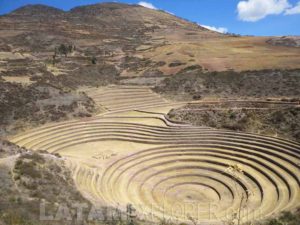Home > Destinations > Peru > Sacred Valley of the Incas
Sacred Valley of the Incas, Peru
The Sacred Valley is a region of the Peruvian Andes fundamentally comprised along the Urubamba River (a tributary of the Amazon River) between the towns of Pisac and Ollantaytambo. Some of the most fertile lands of the former empire are found here, at a place that continues to be one of the main attractions of the Inca route. The Sacred Valley is a short drive away of Cusco, and this city is conveniently used by most tourists in the region for accommodation, although it is also possible to stay in the valley itself. If this is not the case, you can visit the area in a series of half-day or full day tours from Cusco.
Pisac, just over 30km (19mi) from downtown Cusco, is famous for its "crafts" market carried out mainly on Sundays, but also on some weekdays. The place is crowded with small kiosks selling all types of touristy souvenirs at inflated prices. Do not be afraid to bargain in case something catches your attention, and remember that, as elsewhere in the country, sellers will not hesitate to try to sell you whatever it is at absurdly high values. The Inca ruins of Pisac, with large agricultural terraces and a number of old buildings are a much more interesting call than the market. The original city had been erected around the year 1440 by the Inca Pachacutec and destroyed by Francisco Pizarro in the decade of 1530. Modern Pisac dates from 1570.

Moray, located about 45km (28mi) northwest of Cusco and 57km (35mi) west of Pisac, houses the most uncommon Inca ruins. Situated on a plateau about 3,500m (11,500ft) above the sea level, the site is home to what was a kind of experimental laboratory for the Incas to study the effects of different climatic patterns in the productivity of their crops. Creating a large number of concentric circular terraces, inserted one in the other within a depression, and building a sophisticated irrigation system, the Incas were able to control the forces of the sun and wind to create unique gradients of temperature and humidity. It is speculated that the place has served the purpose of taming, acclimatizing and hybridizing wild plant species in order to adapt them for human consumption and to make their production process viable.

Close to Moray you will also be able to see the salt terraces of Maras, known as salineras. This is a collection of hundreds of small puddles excavated along a canyon so as to evaporate the saline water shedding of the mountains to obtain salt. The salt water is directed to these puddles through a very intricate system of channels and once each puddle is filled, it’s access is closed until the water evaporates and the dried salt is extracted. Because ponds are filled on a rotating basis, there is always work in progress at the various production stages to be observed. This is a beautiful and very interesting sight.

Ollantaytambo, 72km (45mi) northwest of Cusco, near Maras, on the banks of the Urubamba River, lies at an elevation of 2,800m (9,200ft). It was owned by the Inca Pachacutec, responsible for the conquest of the region. Ollantaytambo was an important ceremonial and defensive center, as well as being the place where the Incas fled to after Cusco was taken by the Spaniards.

The main tourist destination in Peru, Machu Picchu is near Ollantaytambo, but can only be reached on foot, usually via the Inca Trail in four days, or by train, in a short train ride to Aguas Calientes. When you return to Cusco, you can take a flight to other domestic destinations, such as the capital Lima, a train to the city of Puno on the shores of Lake Titicaca, or a bus to places like the second largest city in Peru: Arequipa.








